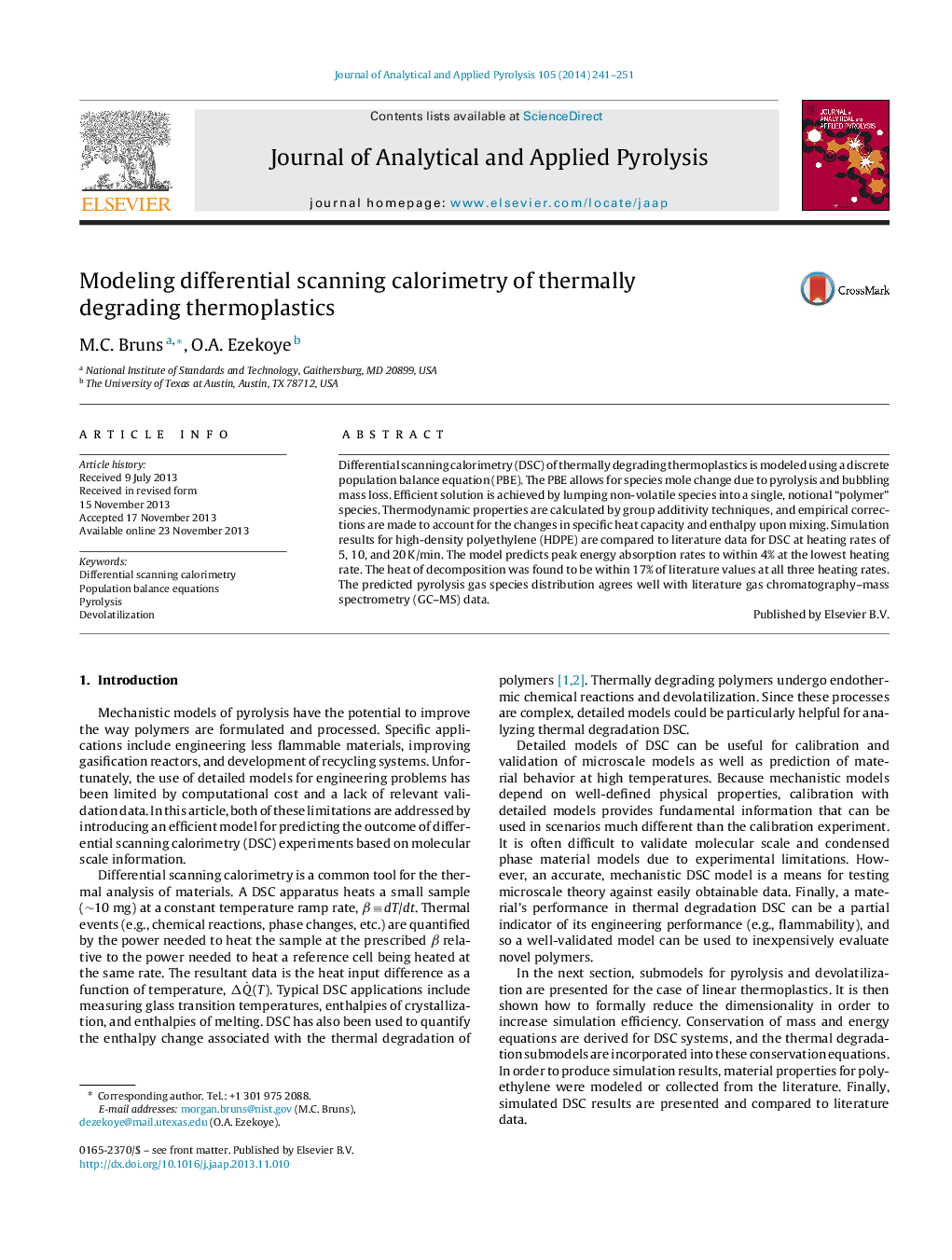| Article ID | Journal | Published Year | Pages | File Type |
|---|---|---|---|---|
| 1198374 | Journal of Analytical and Applied Pyrolysis | 2014 | 11 Pages |
•We present a mechanistic model of differential scanning calorimetry (DSC).•Pyrolysis is modeled by a chemically consistent random scission mechanism.•Thermodynamic properties are estimated using group additivity principles.•The model predicts peak energy absorption rates to within 4%.•The predicted pyrolysis gas species distribution agrees well with literature data.
Differential scanning calorimetry (DSC) of thermally degrading thermoplastics is modeled using a discrete population balance equation (PBE). The PBE allows for species mole change due to pyrolysis and bubbling mass loss. Efficient solution is achieved by lumping non-volatile species into a single, notional “polymer” species. Thermodynamic properties are calculated by group additivity techniques, and empirical corrections are made to account for the changes in specific heat capacity and enthalpy upon mixing. Simulation results for high-density polyethylene (HDPE) are compared to literature data for DSC at heating rates of 5, 10, and 20 K/min. The model predicts peak energy absorption rates to within 4% at the lowest heating rate. The heat of decomposition was found to be within 17% of literature values at all three heating rates. The predicted pyrolysis gas species distribution agrees well with literature gas chromatography–mass spectrometry (GC–MS) data.
